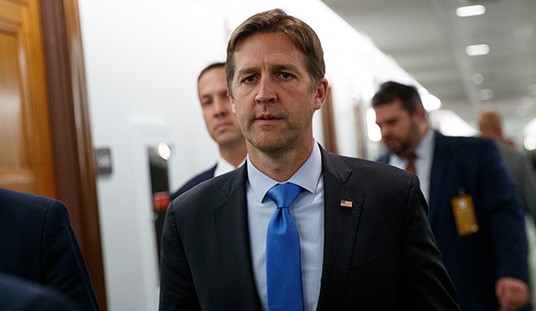We see what Uncle Sam makes us pay every April. But a new edition of an annual report shows there’s an insidious fee we pay on a daily basis.
We all know what last Monday was. As many of us paid Uncle Sam’s toll — mine was almost a wash, which worked out about how I wanted it — one had either a sour mood knowing that Fedzilla took more of one’s hard-earned salary or that giddy feeling of having absconded with free money because a refund was due. (In many cases, of course, that was just the money loaned to Beltway bureaucrats — interest free! Try finding a bank who will give you those terms!)
Yet we forget there’s a hidden tax which gnaws at our pocketbooks and the economy at large every day. It was pointed out by the Competitive Enterprise Institute in their “Ten Thousand Commandments” report, released on Tax Day.
Regulations cost $1.75 trillion in compliance costs, according to the Small Business Administration. That’s greater than the record federal budget deficit — projected at $1.48 trillion for FY 2011 — and greater even than all corporate pretax profits. Says report author Wayne Crews, CEI’s vice president for policy:
Trillion-dollar deficits and regulatory costs approaching $2 trillion annually are both unsettling new developments for America. … Every year, the federal government blows past previous deficit, debt, and regulatory burdens with no end in sight. No wonder Americans are fed up with Washington.
Just think of the handicap that sucking over $1 trillion annually out of the national economy places on job creation, for regulations that normally have little to do with safety but a lot to do with selecting winners and losers. There’s a school of thought out there which believes that big business (and by that I mean Fortune 500 multinational corporations) is in bed with government to promulgate new regulations in order to discourage competition — a sort of trust-busting in reverse. Since start-up businesses have great ideas but little capital behind them, creating a maze of red tape they need to navigate before they can begin making their mark tends to discourage competition.
But this also tends to retard progress and innovation. Imagine if regulations were so complex that creators and inventors like Henry Ford or Thomas Edison were discouraged from doing their work and seeking their fortune. With the vogue job of the day being so-called “green” jobs — a path paved with federal regulations — self-appointed experts tend to forget there is a bridge to be built from the technology of today to their vision of the future. Ford and Edison served as pioneers in a previous era, but today’s pioneers are being discouraged from it by overregulation. That bridge is hardly in the planning stages.
In Maryland: Governor Martin O’Malley is pushing for offshore wind farms. They would indeed provide “renewable energy,” but at a premium which would cost Maryland residents more for their electricity. An industry which uses a lot of power may see this pricing differential and decide to locate in another state (or country, since we’re now playing on a global scale) where energy can be had more cheaply. By being short-sighted and regulating the market — the Maryland General Assembly mandated that a certain percentage of electricity be created from “renewable” sources — the state has lost a tool for attracting business at the behest of a lobbying group which carries great weight around Annapolis and has figured out how to use government for its own ends.
But even a state like Maryland — a place which is doing its best to be a socialist paradise, with the added advantage to that end of being the residence for thousands of federal bureaucrats — doesn’t hold a candle to the power embodied in authoring federal regulations themselves. As the CEI report notes, the Federal Register now weighs in at over 80,000 pages — about six dozen copies of Atlas Shrugged stacked high. Each of those pages can be used as a landmine to discourage competition and reward corporate friends if written in just the right manner.
Closer to home, both corporate winners and losers have to make up the huge hit that regulations present to their bottom line in higher prices, passed on to wholesalers and end-users. This phenomenon was illustrated best when gas prices last surged toward $4 a gallon a few years back — suddenly service bills sprouted new “fuel surcharges” as a line item. (In a lot of cases, though, these additional tolls didn’t disappear once gasoline retreated under $2 a gallon.)
Our bills don’t have a separate line item for regulatory costs. The CEI report attempts to illustrate the impact at a federal level, but it misses the additional price passed on by state and local government. Even a nearly $4 trillion federal budget doesn’t scratch the fiscal surface of what regulations hold back from an eleven-figure economy.









Join the conversation as a VIP Member